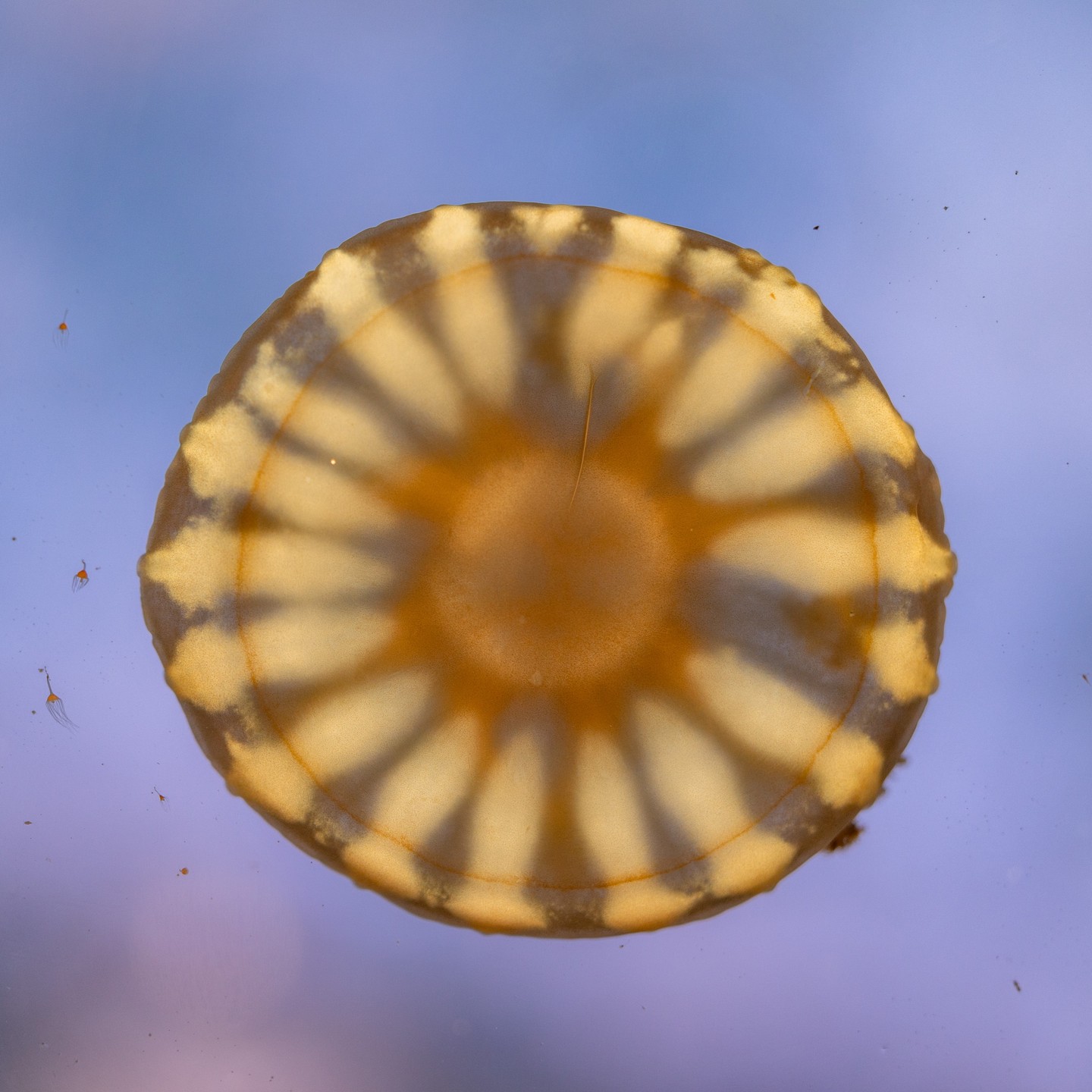- Upside-down jellies: Unique adaptations for dual feeding mechanisms in shallow-water environments.
- The role of symbiotic algae in the photosynthesis process benefiting the jellies.
- The ecological significance of upside-down jellies in coastal ecosystems.
- Conservation efforts and implications for marine biodiversity and habitat preservation.
- Understanding the juvenile ephyra’s role in the jellyfish lifecycle and population dynamics.
Upside-down jellies, scientifically known as Cassiopea, have evolved fascinating adaptations that allow them to thrive in their natural habitats, particularly shallow coastal waters. Unlike their medusa counterparts, these jellies orient themselves with their bells submerged and their tentacles skyward, an inversion that offers a unique determinant for their dual methods of sustenance. Through a remarkable strategy involving natural buoyancy and precise orientation, upside-down jellies capture zooplankton directly from above while also harnessing sunlight for photosynthesis through the algae hosted in their tentacles.
The upside-down jelly’s relationship with the algae, commonly dinoflagellates known as Zooxanthellae, plays a pivotal role in their survival. These algae reside within the jelly’s oral arms, facilitating photosynthesis when exposed to sunlight. This symbiosis mirrors other marine invertebrates such as corals. The photosynthetic process not only provides energy for the algae but also supplies nutrients and energy-rich compounds that the jellies can absorb. This dual feeding strategy enhances their survival prospects, especially in nutrient-poor environments where food might not be readily available.
Understanding the ecology and behavior of upside-down jellies provides insight into their environmental roles. These jellies are crucial in nutrient cycling within their ecosystems. By capturing zooplankton, they regulate plankton populations, influencing the aquatic food web. Moreover, the jelly’s interactions with algae enhance nutrient recycling in marine environments, promoting the productivity of surrounding habitat. As indicators of ecosystem health, their presence or absence can serve as a gauge for assessing environmental conditions, particularly in regions affected by human activities such as pollution and overfishing.
Conservation of upside-down jellies underscores the broader imperative for preserving marine biodiversity. Efforts are directed not only towards protecting the species but also ensuring the stability of their habitats. Coastal ecosystems face threats from climate change, pollution, and human interference, necessitating proactive conservation strategies. Protecting these ecosystems benefits not just the jellies but a myriad of species that thrive alongside them. Conservation actions might include habitat restoration, pollution mitigation, and the establishment of marine protected areas, emphasizing sustainable interaction with oceanic resources.
In the lifecycle of these gelatinous creatures, the juvenile stage known as ephyra is vital for understanding population dynamics and growth. The ephyra emerges from the polyp stage, eventually developing into a mature jellyfish. These juveniles’ survival rates can indicate ecosystem health, influenced by factors like water temperature, salinity, and food availability. Conservation efforts need to include research on these stages to better predict ecological outcomes in the face of environmental changes.
Photographs of upside-down jellies taken under varying lighting enhance our understanding of their structural beauty and functional design. These visuals aid in illustrating their unique adaptations, providing educational tools that bridge scientific knowledge with public awareness. The presence of ephyra around the medusa adds a dynamic layer to this understanding, portraying a complete picture of the species’ lifecycle and its ecological interconnectedness.
Through continued scientific inquiry and conservation advocacy, upside-down jellies remind us of the intricate balance required to maintain healthy ecosystems. By examining their behaviors, ecological contributions, and the environmental challenges they face, stakeholders can better implement strategies that ensure their ongoing survival and the preservation of marine biodiversity.
*****
Source Description
Macro Monday: Upside-down, or rightside-up? Upside-down jellies have uniquely adapted to feed in two ways. By swimming upside-down with their tentacles aimed upward, this shallow-water coastal species can capture zooplankton to consume, just like other jellies. However, this also allows the algae in their tentacles to photosynthesize in the sunlight, after which the jellies can feed off the algae’s byproducts!
Photos: Macro shots of the bell-side of an upside-down jelly in two different types of lighting, surrounded by juvenile ephyra.


